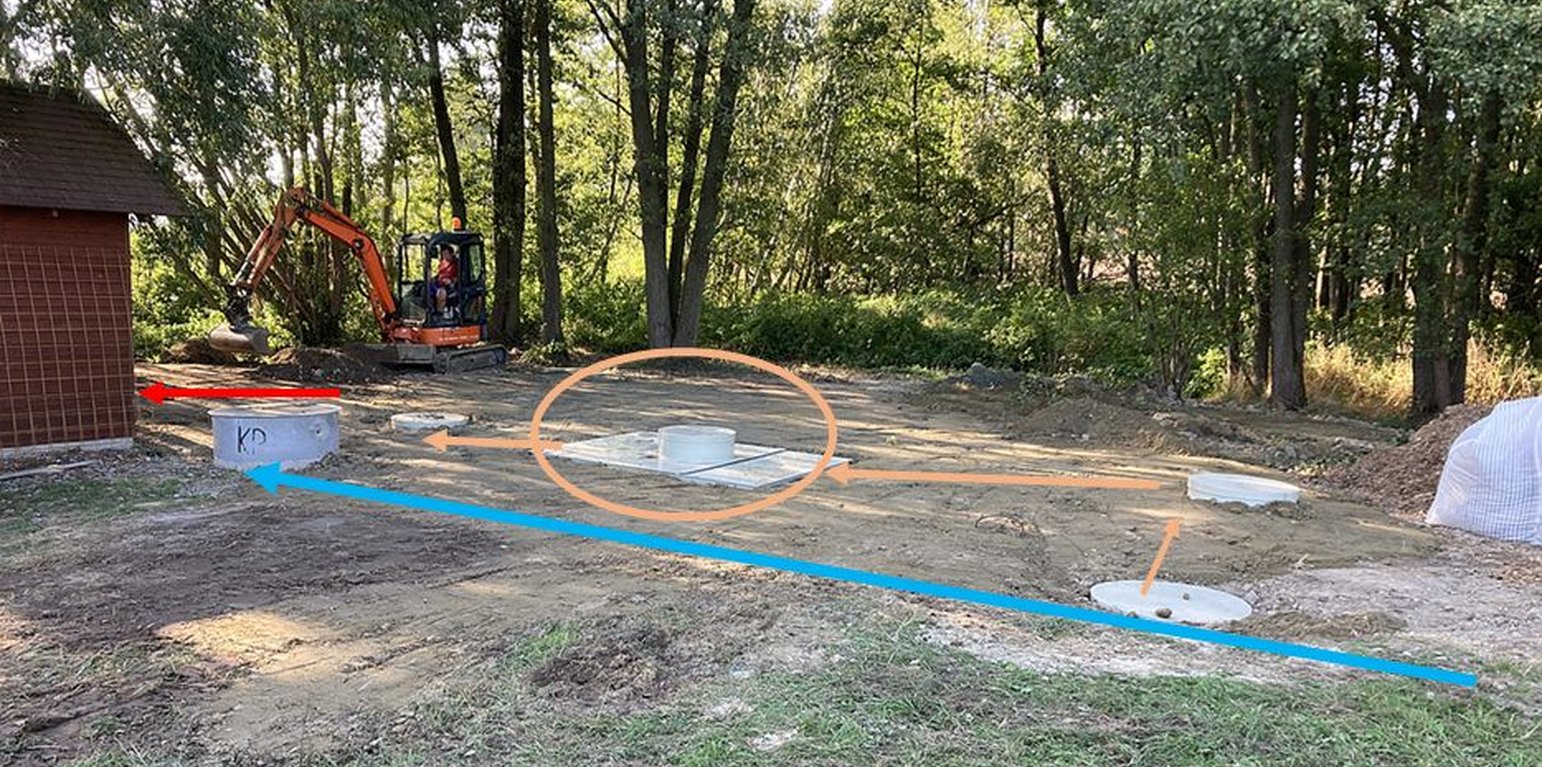



A biofilter or “bioreactor” is a relatively small installation used to break down pollutants from drainage water. Its basic function is to allow the passage of drainage water, contaminated with nutrients and pesticides, through a container with pollutant-reducing agents. Bioreactors are usually located at the bottom of agricultural drainage structures on the drains or in connection with drainage outlets. Ideally, the biofilter is located on a site that is no longer part of the cultivated land or is under permanent grassland.
In principle, two biofilter solutions are possible. In the case of low and regular drainage flows, the drainage section is directly replaced by a biofilter. With higher flows and in the case of rapid response of the drainage structure to rainfall-runoff episodes, the biofilter is placed parallel to the outlet drain or is located under the drainage outlet (if ambient conditions allow). Such a design includes a distribution structure (preferably located in a drainage manhole) and a drainage pipe to allow safe bypassing of a portion of the elevated drainage outlet, to maintain the residence time of the water in the biofilter and thus its corresponding efficiency.
The biofilter may be designed as closed or open. A closed biofilter is completely buried and normal tillage can take place. An open biofilter lacks the advantage of an undisturbed terrain but has the advantage of benefitting from plants that enhance the purification of drainage water by bacteria living on their roots.
The installation always consists of a bed or container in which the reducing agent is enclosed, ensuring the isolation of the agent from the surrounding soil and water. In the case of a smaller sized closed biofilter, a plastic container can be used, while in the case of a larger or open design, plastic film can be used as a bed. Various materials can be used as biofilter fillings, or substrates, both individually and in combination. In most cases, the reducing agent is carbonaceous, with denitrification mediated by chemo-organotrophic bacteria.
In terms of N-NO3 removal, the most effective are wood chips, which have a high hydraulic conductivity and a C:N ratio of 30:1 to 300:1. In particular, chips from poplar, pine and larch are suitable. For the removal of pesticides or biopharmaceuticals, then biochar (biochar) and lignite are suitable as natural and readily available materials. A combination of materials can also be used. For example, the addition of biochar to the wood chips will increase the efficiency of the bioreactor in degrading pesticides, or the charge can be combined with an inorganic substrate (sand, vermiculite), which is added to prevent undesirable settling, reduce hydraulic conductivity and at the same time mechanically purify the drainage water.
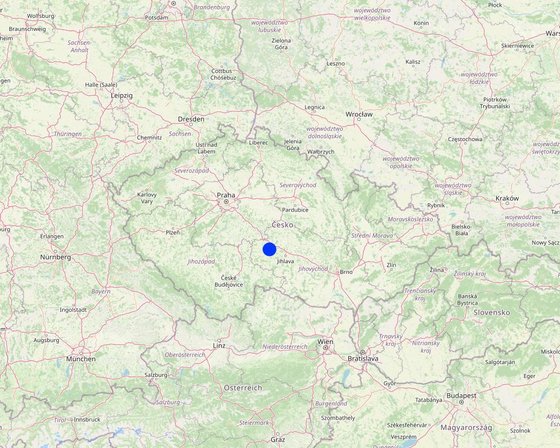
Localização: Černičí, Dehtáře, Vysočina region (Highlands Region), República Tcheca
Nº de sites de tecnologia analisados: 2-10 locais
Difusão da tecnologia: Aplicado em pontos específicos/concentrado numa pequena área
Em uma área permanentemente protegida?: Não
Data da implementação: menos de 10 anos atrás (recentemente)
Tipo de introdução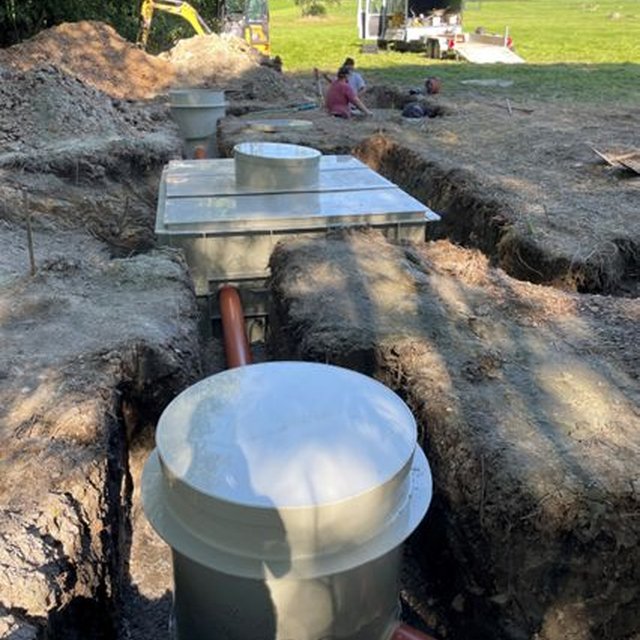
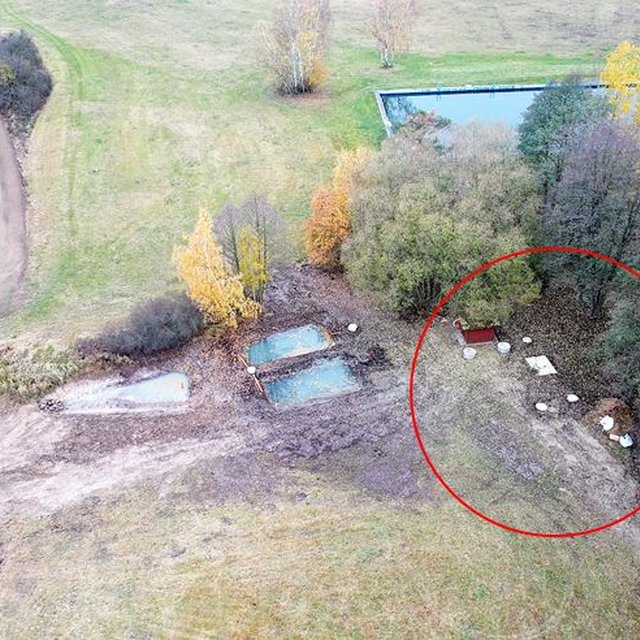

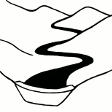



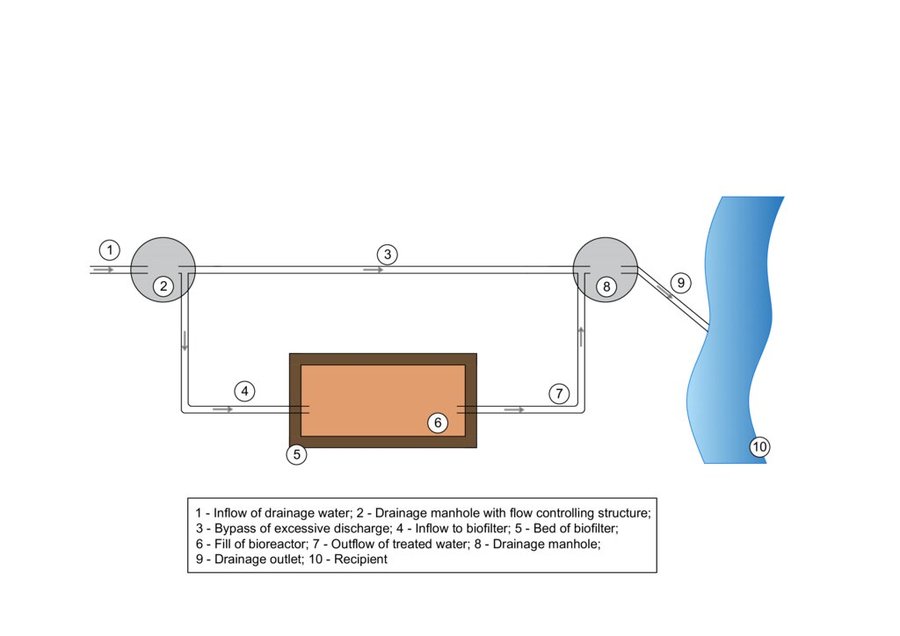
| Especifique a entrada | Unidade | Quantidade | Custos por unidade (EUR) | Custos totais por entrada (EUR) | % dos custos arcados pelos usuários da terra |
| Mão-de-obra | |||||
| Project/design | person-days | 5,0 | 200,0 | 1000,0 | 100,0 |
| Engineering | person-days | 10,0 | 200,0 | 2000,0 | 100,0 |
| Implementation of the measure | person-days | 6,0 | 150,0 | 900,0 | 100,0 |
| Equipamento | |||||
| Tansport of material | machine-days | 5,0 | 150,0 | 750,0 | 100,0 |
| Excavation works | machine-days | 3,0 | 220,0 | 660,0 | 100,0 |
| Material vegetal | |||||
| grasss seeding | kg | 10,0 | 8,0 | 80,0 | 100,0 |
| Material de construção | |||||
| Distribution object (manhole) | piece | 2,0 | 2200,0 | 4400,0 | 100,0 |
| Container for filling the biofilter | piece | 1,0 | 2400,0 | 2400,0 | 100,0 |
| Sorbents (vermukulit, biochar, woodchips) | m3 | 3,0 | 440,0 | 1320,0 | 100,0 |
| drainage pipes and other material | m | 20,0 | 2,0 | 40,0 | 100,0 |
| Custos totais para a implantação da tecnologia | 13'550.0 | ||||
| Custos totais para o estabelecimento da Tecnologia em USD | 14'728.26 | ||||
| Especifique a entrada | Unidade | Quantidade | Custos por unidade (EUR) | Custos totais por entrada (EUR) | % dos custos arcados pelos usuários da terra |
| Mão-de-obra | |||||
| grass chopper | machine days | 1,0 | 100,0 | 100,0 | 100,0 |
| Material vegetal | |||||
| grasss seed | kg | 10,0 | 8,0 | 80,0 | 100,0 |
| Custos totais para a manutenção da tecnologia | 180.0 | ||||
| Custos totais de manutenção da Tecnologia em USD | 195.65 | ||||
Slowing of the drainage runoff will be noticeable especially during normal and lower discharges
The effects of the measures are particularly positive in terms of reducing nutrient (nitrogen, phosphorus) and pesticide concentrations
The effect of biofilter-type measures is particularly pronounced in small intensively drained agricultural catchments where much of the runoff (and pollution) comes from drainage waters